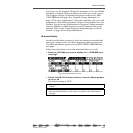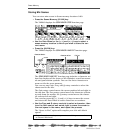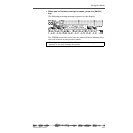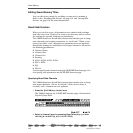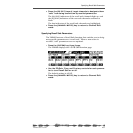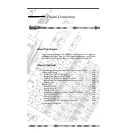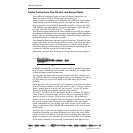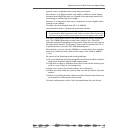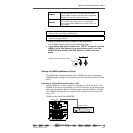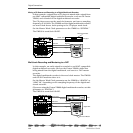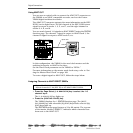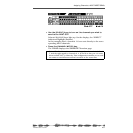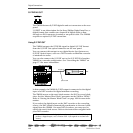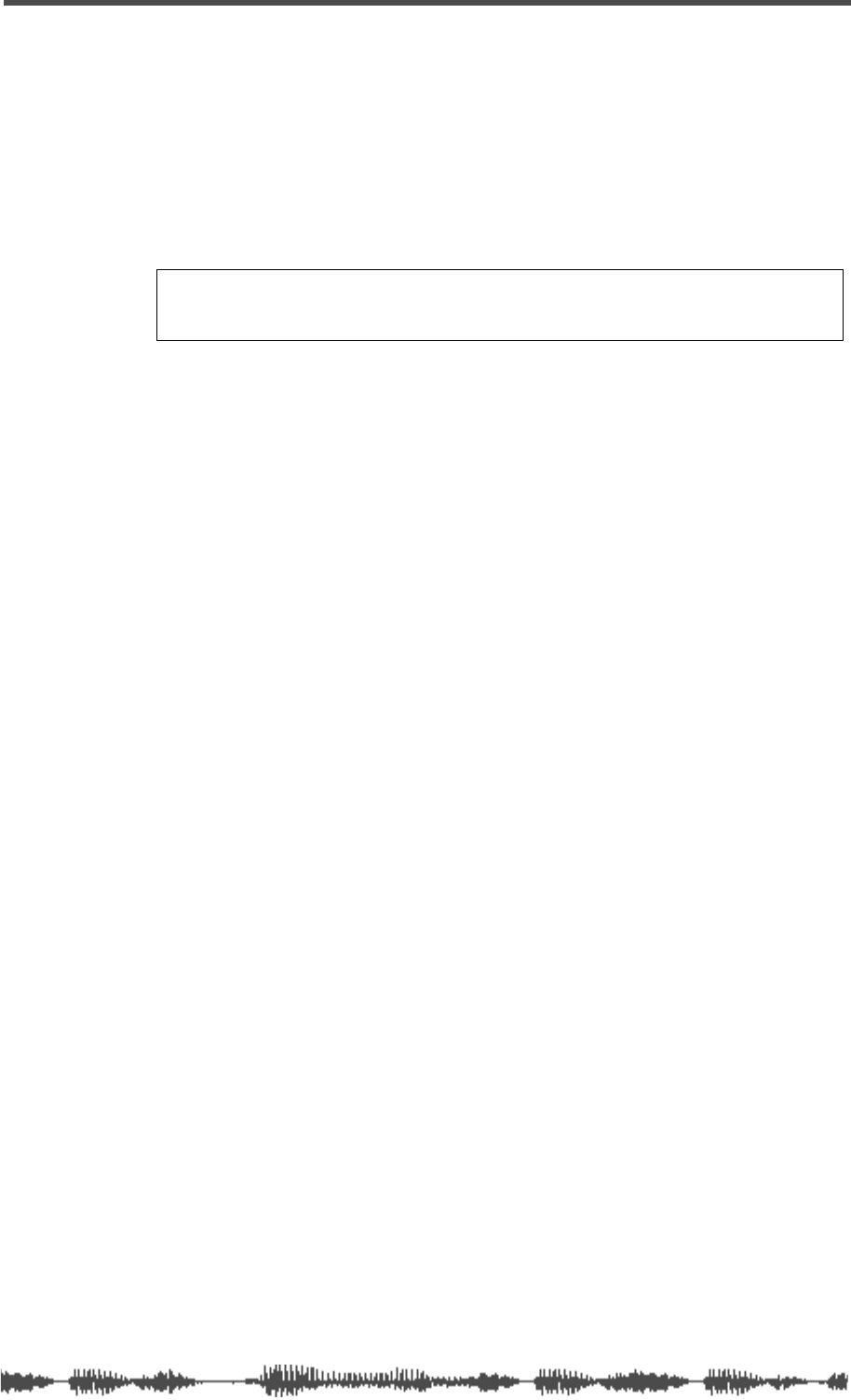
Digital Connections, Word Clocks, and Sample Rates
VM200 User’s Guide
161
system, noise or glitches may creep into your mixes.
Each device in a digital system may utilize a different word length,
because most digital devices are capable of interpreting words and
truncating or protracting their length.
However, it is important that every component in your digital audio
system do two things:
❑
utilize the same sample rate (44.1 or 48kHz)
❑
synchronize with a designated word clock master.
The word clock signal runs at the same frequency as the sampling
rate. The VM200 generates its own word clock at 44.1 kHz (the
industry-standard sampling rate for music CDs) and can be used as
the word clock master. (In general, if your work is destined for CD, it
is probably best to use the 44.1 kHz sampling rate.)
Alternatively, you can use the VM200 as a word clock slave synchro-
nized to an external word clock in the range of 44.1kHz to 48kHz,
+/-6%.
Be aware of the following word clock guidelines:
❑
You can distribute word clock signals via dedicated cables or derive
them from standard digital audio connections.
❑
If all devices share a common word clock, leave all the devices pow-
ered on, even if they’re not being used.
❑
First turn on the word clock master, then the slaves.
❑
When you shut down the system, first turn off the slaves, then the
master.
❑
Before a recording session, make sure that all word clock slaves are
synchronized to the master word clock.
For more information, refer to the documentation for each device.
Note:
Word clocks differ from SMPTE or MIDI timecode, which are used
to synchronize MIDI sequencers and audio recorders. Word clocks syn-
chronize the digital audio processing circuits in each digital audio device.



